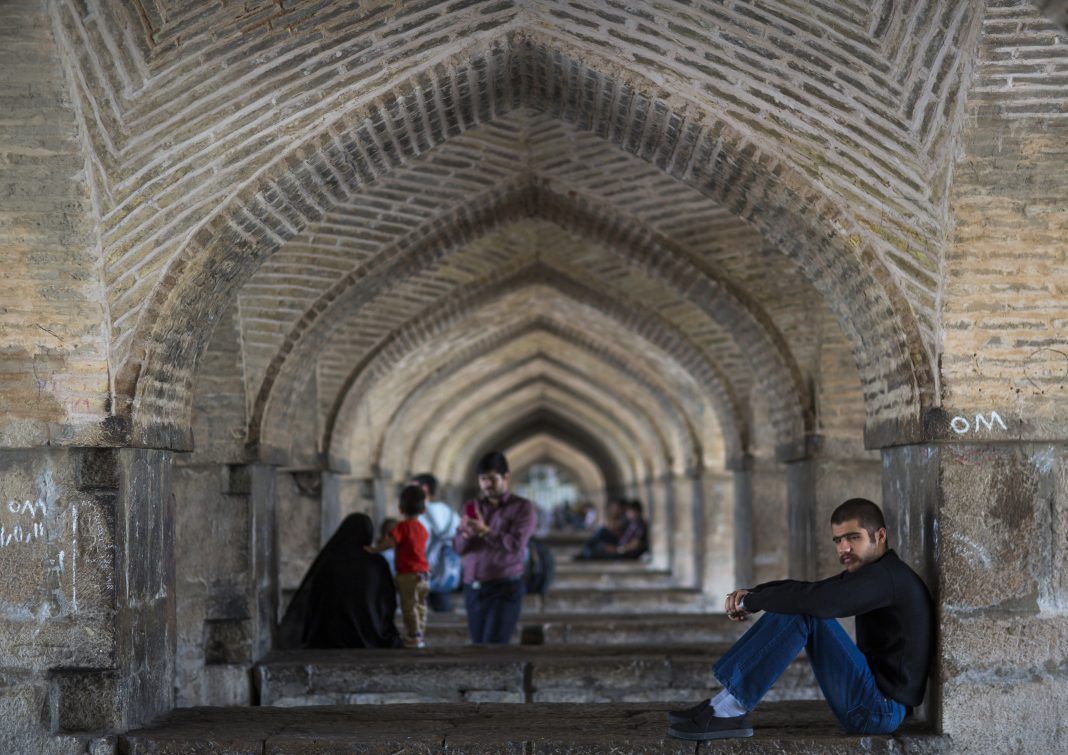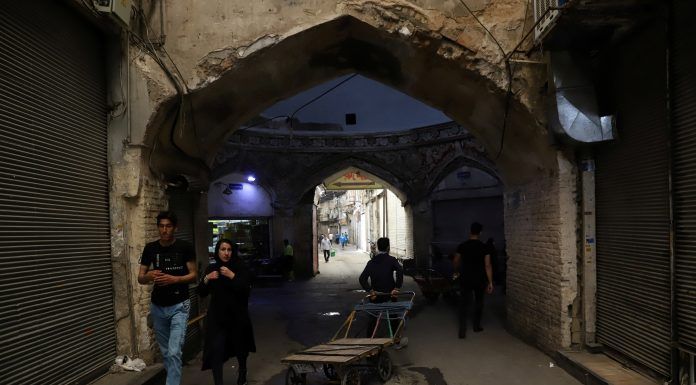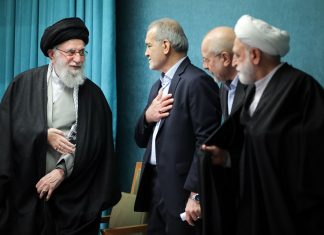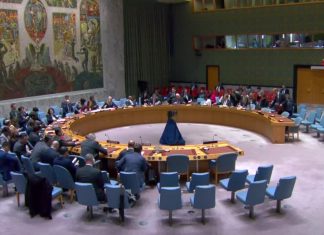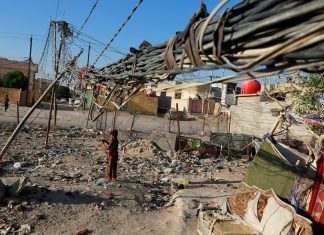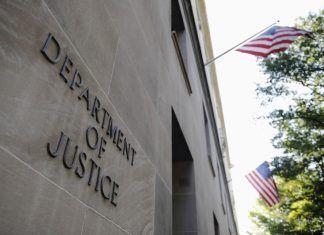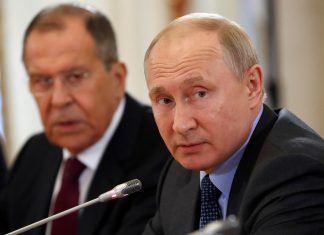By Kayhan Life Staff
Iran has seen an unprecedented acceleration in its inflation rate over the last few weeks. Economists attribute this rise to the depletion of the government’s foreign exchange reserves, the high rate of liquidity, the uncertain political fate of the Iran nuclear, and the country’s reluctance to ratify the Financial Task Force (FATF) Recommendations.
Representatives from the U.S. and the Islamic Republic have held six separate talks in Vienna this year to revive the nuclear deal — the 2015 Joint Comprehensive Plan of Action (JCPOA) — but the negotiations have yielded no concrete results so far. Former U.S. President Donald Trump unilaterally withdrew from the JCPOA in May 2018.
The FATF is an intergovernmental organization founded in 1989 at the initiative of the G7 to develop policies to combat money laundering and terrorism financing. It operates under the auspices of the Organization for Economic Co-operation and Development (OECD), an intergovernmental economic organization with 36 member countries, founded in 1961 to stimulate economic progress and world trade.
In February 2020, the FATF blacklisted Iran for failing to enact the Palermo Convention, the Countering the Financing of Terrorism (CFT), and Anti-Money Laundering (AML), blocking Iran from international banking system transactions.
Meanwhile, the newly elected Iranian President Ebrahim Raisi and his government have offered no detailed plans to tackle the country’s economic crisis. Since coming to office nearly two months ago, Mr. Raisi and his economic team have promised to halve the inflation rate in the next two years and reduce it to single digits by the end of the government’s first term in 2025.
However, all economic indicators show that inflation is continuing to rise. According to the Central Bank of Iran (CBI) report, the inflation rate was 41 percent at the end of 2019 and 50 percent in 2020. The report added that the inflation rate reached 55 percent in June, the highest in the past 77 years.
Since May, the CBI has been without a governor, which has worsened the economic crisis, given the urgent need to control inflation and the currency. The governor of the CBI is also the chairperson of the Money and Credit Council (MCC).
Once the Majlis (Iranian Parliament) approves the government’s annual budget, the CBI presents a detailed monetary and credit policy to the MCC for approval. The absence of a CBI chairperson in the past few months has destabilized the financial system, and one-third of the banks in Iran have reportedly accumulated massive debts.
Comments on the revival of the JCPOA by President Raisi and government officials have also had psychological effects on the market.
Iranian Finance and Economy Minister Ehsan Khandouzi recently promised that “the general price of goods will come down in the coming months,” adding that “the government has taken measures to access frozen Iranian assets in foreign banks.”
Around the same time, Iranian Foreign Minister Hossein Amir-Abdollahian said some $10 billion of Iran’s frozen assets must be released before Tehran would return to talks on rebooting the JCPOA in Vienna.
Comments by Mr. Raisi and members of his cabinet show that while Iran is desperate to replenish its severely depleted foreign exchange reserves, there is no sign that the nuclear negotiations will resume soon.
The current situation has been detrimental to the foreign exchange and gold markets, which have been volatile in recent weeks. The exchange rate, which recently had recovered to 270,000 rials to one U.S. dollar, weakened to 284,000 rials per dollar on Oct. 4.
Comments on the oil revenue by Mohsen Rezaei, the newly appointed Vice President for Economic Affairs, may have triggered the sudden drop in the rial’s value. Speaking at a meeting of the government’s Economic Coordination Headquarters on Oct.3, Mr. Rezaei said the country had generated $1.2 billion in oil revenue since April.
The rial dropped in value the next day.
Lifting U.S. Sanctions Will Not By Itself Revive Iranian Economy, Officials Say
While $1.2 billion in oil revenue is the lowest that Iran has generated in the past four decades, Rezaei described it as a “positive sign.” The figure is vastly lower than the government’s own budget forecasts. In recent months, efforts to narrow the budget deficit have resulted in the government’s increased borrowing from the CBI, a high liquidity rate, and massive inflation.
Mohammad Kashtiaray, the deputy chairperson of the Tehran Gold and Jewelry Union, has said the price of gold could go up in the coming weeks and months, adding: “If the inflation rate does not come down, we will see an increase in the value of dollar and gold.”
Data on the volume of Iranian trade and export is very discouraging. According to a recent report by the Islamic Republic of Iran Customs Administration (IRICA), Iran has exported $21.8 billion worth of non-oil products since March and imported $23.2 billion worth of goods in the same period.
Iran imported $6.6 billion worth of goods in August alone. The trade deficit with Iran’s $1.2 oil revenue and non-oil exports has increased demand for and lowered the supply of foreign currency, driving up the rial exchange rate.
Iran’s oil exports may drop even lower than current levels if the U.S. successfully persuades China to buy less oil from Iran. Meanwhile, inflation and prices of goods continue to increase in Iran, reducing people’s buying power.
Foreign media have reported on economic and financial challenges facing Iranian consumers.
In its Sept. 30 report titled “Beset by Inflation, Iranians Struggle with Hight Food Prices,” the Associated Press (AP) said: “With U.S. sanctions still strangling the economy, record-breaking inflation has hit ordinary Iranians where it hurts most. Stunned shoppers are cutting meat and dairy from their diets, buying less and less each month.”
“Families now find their money increasingly worthless and must forgo foods once considered staples,” the report added. “Compared with a year ago, the price of milk, yogurt, and eggs has swelled by nearly 80 percent. According to the government statistics agency, the cost of vegetables and meat has risen by some 70 percent and the cheapest basics like bread and rice by 50 percent.”
“Now I can only buy groceries once a month,” AP quoted a mother of three in Tehran as saying. “We have to be pinching pennies.”
“We see prices get more and more expensive every day,” another woman told AP. “It is terrible. How is it possible to get by with such low salaries?”
The AP report includes comments by an Iranian economist, Morteza Afghani, who said: “The primary cause of the current high inflation is internal, bureaucratic and executive inefficiencies.”
“However, since we depend on selling crude oil and on foreign currencies earned through oil revenues, we have become more vulnerable under sanctions,” Mr. Afghahi added.
Besides threatening the people of Iran’s livelihood, the rising inflation rate has also affected Iranian industries. Oil production relies heavily on importing raw materials, equipment, and technologies, which face a severe problem because of the rising foreign exchange rates. As a result, the government is forced to increase its budget to allocate more funds to imports because of the rial’s devaluation, resulting in a spike in the price of domestic products.
This trend naturally deepens recession by affecting the purchasing power of consumers who are already hit hard by inflation and drives many manufacturers, who cannot afford the cost of raw materials, into bankruptcy.
During his opening speech at the Symposium of the Directors of Chambers of Commerce and Exporters, held at the Persian Gulf Exhibition Hall in Tehran on Oct. 2, Gholamhossein Shafei, the chairperson of Iran’s Chamber of Commerce, Industries, Mines and Agriculture (ICCIMA), said: “To develop the economy we must increase production.”
“The government must resolve trade issues including procurement of direct and indirect raw materials, and increase investment in the CBI, the IRICA, the Food and Drug Organization, and the Ministry of Industry, Mine and Trade and the Ministry of Agriculture Jihad,” Mr. Shafei added in his speech which was relayed virtually to the inauguration of Iran Pavilion at Expo 2020 Dubai on the same day.
[aesop_image img=”https://kayhanlife.com/wp-content/uploads/2021/07/2021-04-10T142826Z_1672883000_RC22TM96S41A_RTRMADP_3_HEALTH-CORONAVIRUS-IRAN-RESTRICTIONS-scaled.jpg” panorama=”off” credit=”FILE PHOTO: People walk in front of closed shops in Tehran, Iran. REUTERS./ ” align=”center” lightbox=”on” captionsrc=”custom” captionposition=”left” revealfx=”off” overlay_revealfx=”off”]
Shafei and many economists believe that the Islamic Republic’s trade laws are the principal obstacle preventing the improvement of the country’s manufacturing and foreign trade. He has called for a six-month comprehensive review of the primary missions of the Ministry of Industry, Mine and trade charters, and the Ministry of Economic Affairs and Finance.
The current economic crisis poses a serious threat to the Islamic Republic’s rule inside the country, where hyperinflation, massive unemployment, and high cost of living have driven many people into poverty. Several economists affiliated with the state have warned of possible unrest and uprisings.
Hossein Raghfar, a prominent economist, has repeatedly warned that the current conditions are not sustainable, and if continued, the country will collapse, and state officials will face a revolt by the public.

